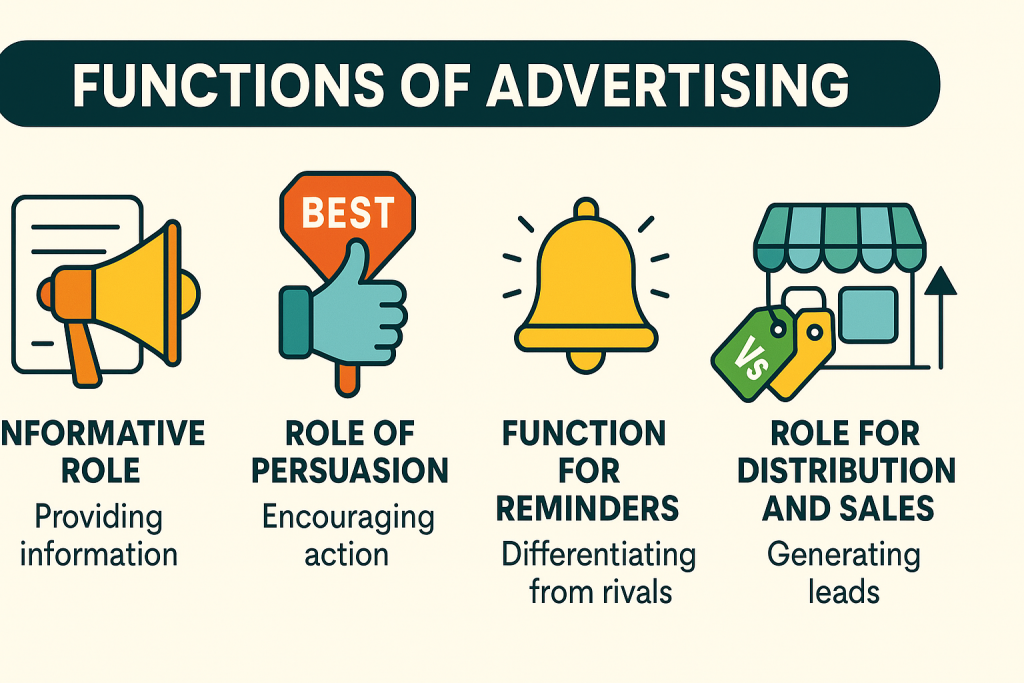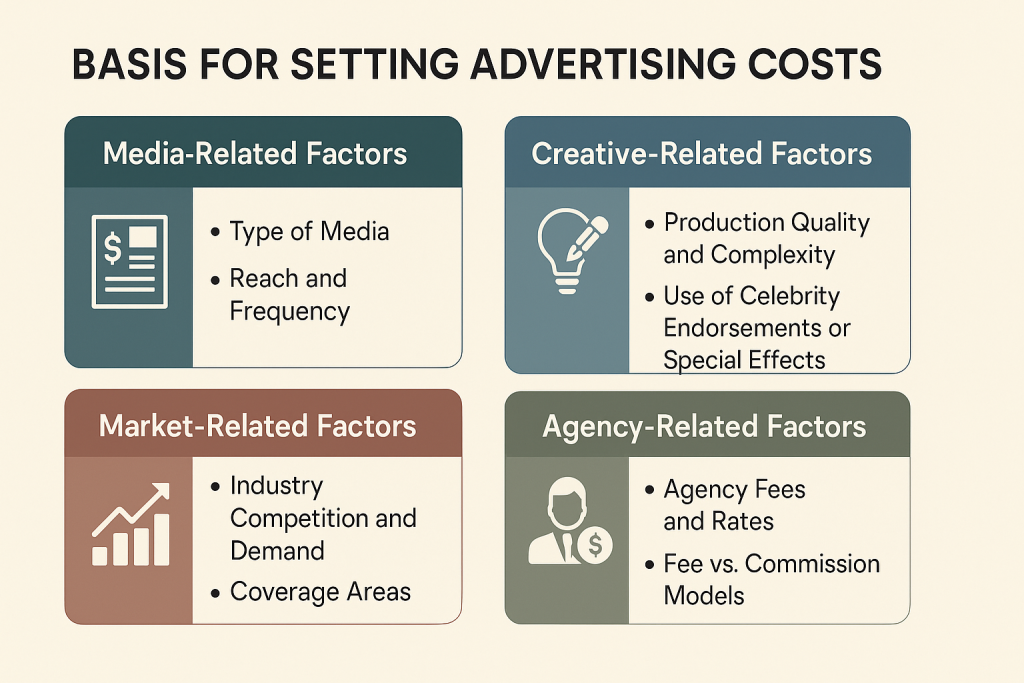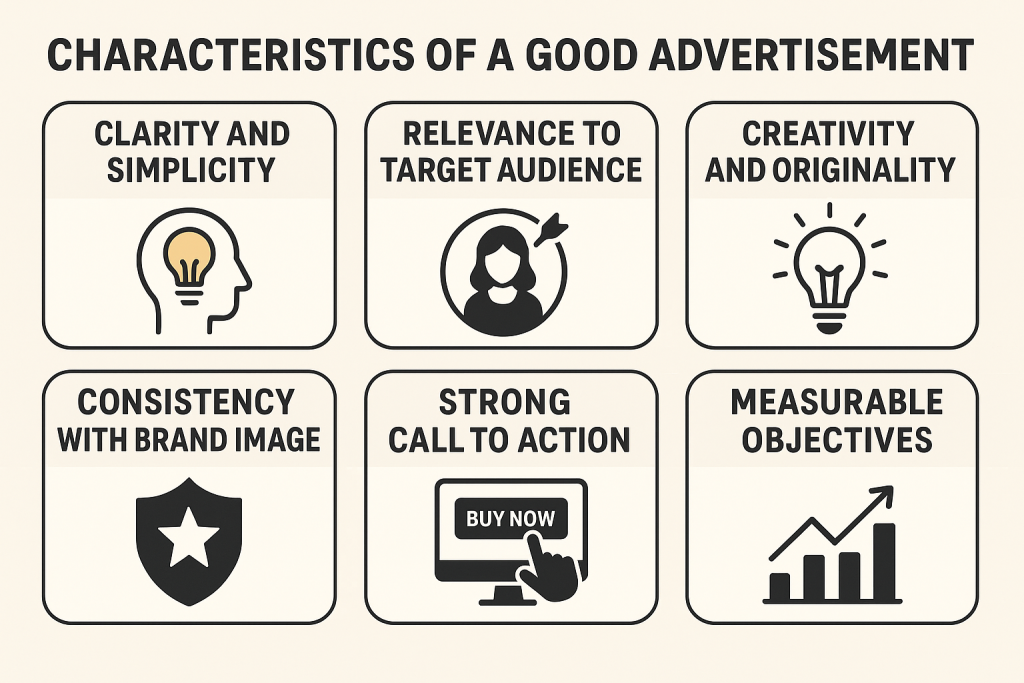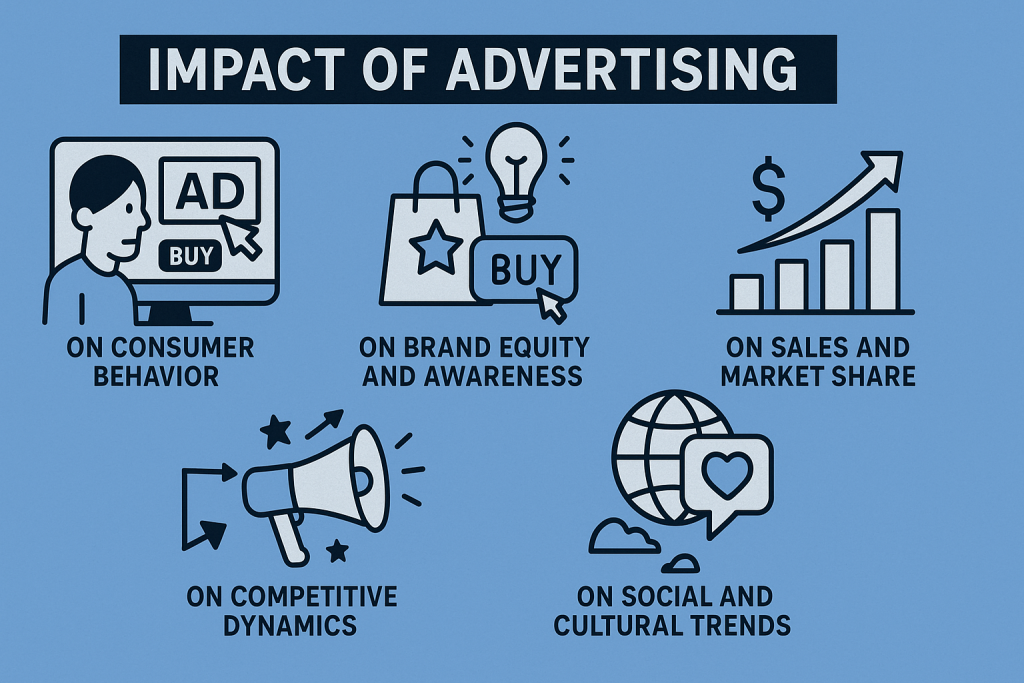You can think of advertising as a straight line to the people who need what you have to offer. Whether it’s an Instagram story that stops people in their tracks, a helpful Google search result, or a poster that stands out, the functions of advertising are all about showing real value and motivating action with the right message at the right moment.
In this user-centric guide, you’ll speak your audience’s language, pick the channels that fit your goals and budget, and track the simple metrics that prove what’s working. By the end, you’ll have a clear plan focused on users—and a solid grasp of the functions of advertising that makes each campaign stronger.
Functions of Advertising

Informative Role: There are things people need to know about your product, like what it does, how it works, and where they can get it. People can quickly decide if what you have to offer meets their wants if the information is clear and easy to understand.
Role of Persuasion: You need to show people why your answer is the best one, not just tell them the facts. Your ads move people from being interested to taking action by showing benefits, telling customer stories, or showing off special deals.
Function for Reminders: Sometimes, even happy customers need a little push. Ads that remind people of your company make it the first thing they think of when they want to buy from you again or tell their friends about you.
Role of Competition: In a busy market, it’s important to show what makes you different. When you want to stand out from the competition, your ads should make clear comparisons, highlight features that are unique to your business, or use your brand’s personality.
Role for Distribution and Sales: Advertising doesn’t just work; it powers your whole network of sales and marketing. You can help every link in your sales chain turn more leads into loyal customers by sending people to your stores, websites, or partner shops.
Basis for Setting Advertising Costs

Media-Related Factors:
Type of Media:There is a rate card for every type of media (TV, print, digital, outdoor). TV spots and print ads that get a lot of attention tend to cost more up front. Digital ads and outdoor ads (like billboards) can be more flexible with price. Pick the mix that gets your message to the right people without spending too much on ads they won’t see.
Reach and Frequency: The costs go up based on how many people you want to see your ad (reach) and how often they see it (frequency). If you need to reach a lot of people quickly, you’ll have to pay more. On the other hand, if you’re trying to reach a small, specific group, you can often get lower buys with places that are very specific.
Time and Place: Ads that run during prime time on TV, on the front page of a newspaper, or at the top of a social media feed get the most attention because they appear when and where people are most interested. You can save money by booking off-peak hours or second-tier spots, but keep in mind that you might not get as much attention.
Creative-Related Factors
Production Quality and Complexity: A quick banner ad made in-house costs a lot less than a full-on TV spot with sets, actors, and post-production. More polish can make people more interested, but only if it fits with what your brand promises and what your audience expects.
Use of Celebrity Endorsements or Special Effects: Adding a famous face or CGI magic can make your costs go through the roof. If you want to reach a celebrity’s fans or make an impression that will last, plan your budget properly. But make sure that the celebrity or effects really help to persuade people to buy.
Market-Related Factors
Industry Competition and Demand: Ad rates go up in areas with a lot of competition, like mobile phones or fast-moving consumer goods. This is because everyone is trying to get the same eyes. If there are a lot of other people in the same field as you, expect prices to go up or look into off-peak times and new channels.
Coverage Areas: It’s cheaper to run local campaigns, like those in Solan or nearby areas, than statewide or national ones. Choose whether you need to reach a lot of people in one city or a lot of people in a lot of different areas, and then adjust your spending accordingly.
Agency-Related Factors
Agency Fees and Rates: Full-service agencies charge hourly rates or retainer fees that depend on their name and level of expertise. It’s possible that a small firm will be cheaper than a large network, but they may not offer as many extras. Pick the model that gives you the services you need.
Fee vs. commission models: Some agencies get paid a flat fee for each job, while others get paid a commission of 10 to 15% of the money you spend on media. They may be more likely to push for bigger purchases if they are paid in commission, but fee-based deals usually work better with clear, goal-driven campaigns.
Characteristics of a Good Advertisement

Clarity and Simplicity: Use simple words and stick to one main point when you talk. People are much more likely to be interested in what you have to offer if they understand it right away.
Relevance to Target Audience: Imagery, tone, and offer should all be tailored to the wants, interests, and pain points of your audience. People are more likely to respond to your ad if it seems like it was “made for me.”
Creativity and Originality: Unique images, catchy headlines, or a new way of looking at a familiar issue can help you stand out. Funny ads get people’s attention and stay with them for a long time.
Consistency with Brand Image: Use fonts, colors, and words that go with the style of your brand as a whole. Prospects will know that this ad really reflects you because you are consistent.
Strong Call to Action: Tell people what to do next: “Buy now,” “Get your free trial,” or “Learn more.” A clear, user-centered call to action (CTA) gets people to convert right away.
Measurable Objectives: Figure out what success looks like (click-through rate, sign-ups, sales, etc.) and add tracking to your ad right from the start. You can improve your method to get even more people involved when you keep track of the results.
Impact of Advertising

On Consumer Behavior: When ads are good, they help people through every step of the buying process, from seeing your offer to choosing to buy. You can get people interested, change their minds, and move them to take action, like clicking “Learn More” or “Add to Cart,” by addressing their wants and pain points.
On Brand Equity and Awareness: Every impression helps build the reputation of your business. Consistent, user-centered messaging builds trust and good feelings, so when prospects see your logo somewhere else, they’ll remember how you solved their problem and feel more comfortable picking you over names they don’t know.
On Sales and Market Share: Campaigns that are well-targeted directly lead to sales. You can get more sales and repeat purchases by reaching the right people at the right time with clear deals. This will help you grow your market share and give you a measurable return on investment (ROI) that you can use to support future campaigns.
On Competitive Dynamics: People will see your ads, but they can also change the rules of the game. If you focus on new ideas or benefits, your ads can make rivals look old, get them to react (which can often make the whole category more interesting), and help you take the lead.
On Social and Cultural Trends: Advertisements both show and change what’s popular at the moment. When you use new ideals or lifestyle trends, like wellness, sustainability, or inclusivity, you can connect with your audience more deeply, start conversations, and make your brand seem more culturally relevant.
Explore our online programs to become future-ready
Transform your career with industry-aligned courses designed by experts.
Conclusion
You now know how advertising can both inform and influence people. It helps them make every sale and reminds them to act. Be sure that your words are clear, on-brand, and useful. Give people a strong reason to act and set easy-to-reach goals.
AI will be used in future ads to make them very specific to each person. Immersive forms, such as AR and videos that can be bought, will make people more interested. First-party data will be used in privacy-first strategies. Always put the people you’re writing for first, and use real facts to get better.


Leave a Reply